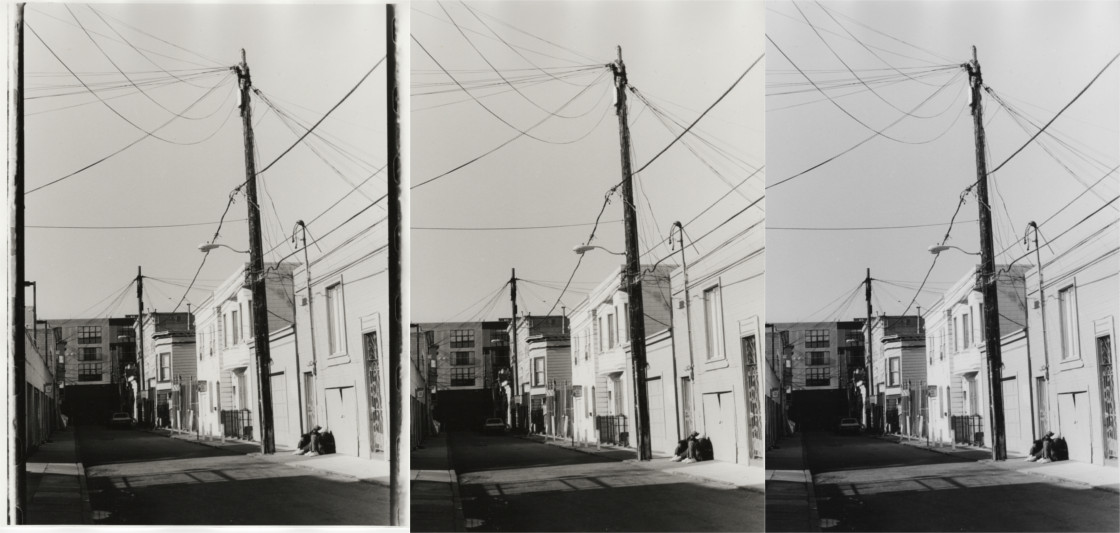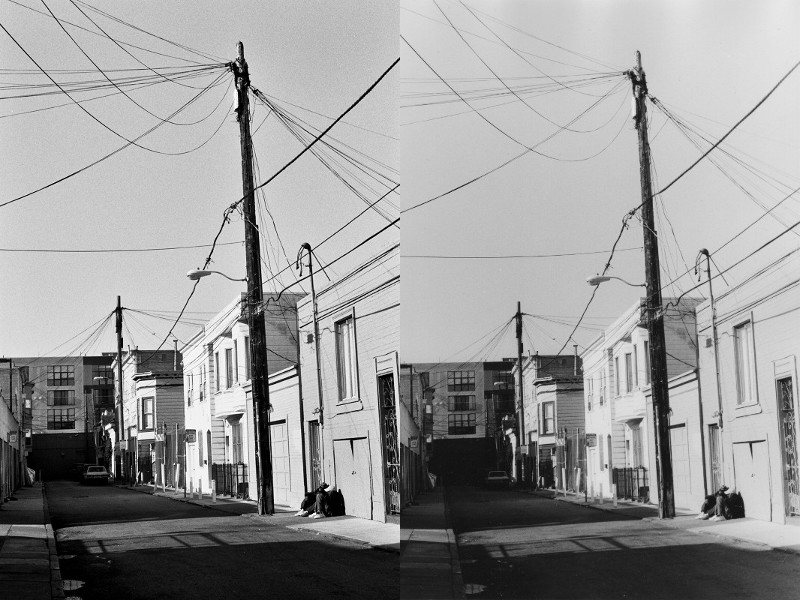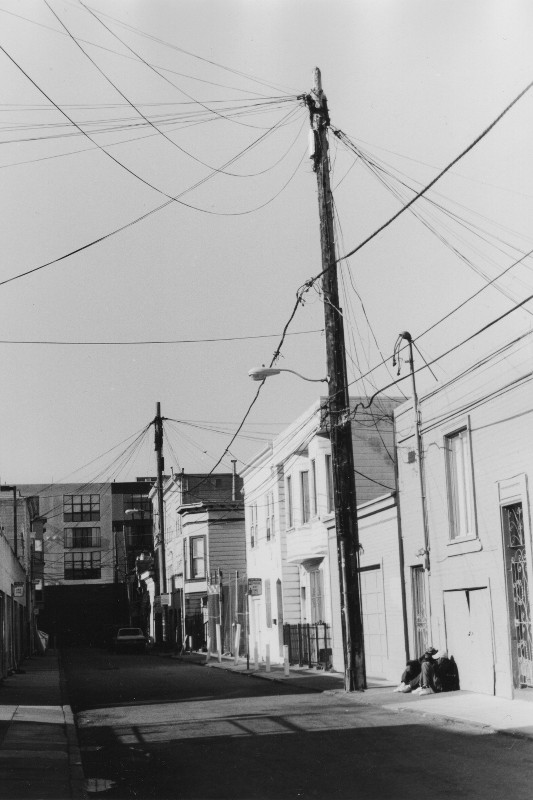Analog to analog to digital
My delayed gratification photography project birthed a binder of negatives longing for a darkroom. To start I took the Intro to Black and White Printing — Darkroom course at the oh-so-incredible-that-such-an-awesome-resource-is-walking-distance-from-where-I-live Harvey Milk Photography Center last fall.
I hoped I’d go back after the course to actually print some of these photos (as opposed to the ones we shot and developed specifically for the class)—I even bought my own paper—but I never got around to it. So when I discovered last week that the second level darkroom course was about to begin, I jumped. (Sometimes it helps to have a little external motivation.)
Tuesday night was the first class, and I printed the first photo from “my analog year” (Rondel Place, from A study of power lines). We experimented with a technique called split filtering, in order to expose the highlights and shadows of the image separately. Of course, I made a quick and dirty scan of the print to compare and contrast the results here. (Note: The only digital post-processing I did was cropping, desaturating, and resizing.)

You might ask, “Why are you doing this?”—considering that I already had my negatives professionally scanned, at no small cost. In the course of “my Leica year”, I bought a scanner and tried to do the job myself, only to discover two things: I had neither the patience nor the desire to scan my own negatives, and the few negative scans I did produce were significantly “worse” than the scans I got back from the photo lab. My scans were washed out, muddy gray, and flat. Theirs (the ones I’ve previously posted to my blog) were super-high contrast, punchy, and hyper-sharp. To my eyes their scans looked great, but compared to mine, I began to realize how much they (or their software) had all the dials turned up for maximum effect (probably in many cases to compensate for photographer inability).

Of course this lack of control bothered me. Mostly because “they” were choosing how to develop my photos, not me, but also because in compensating for my weaknesses, I was losing an opportunity to learn from my mistakes. So if I wasn’t going to be scanning my own negatives, the darkroom it would be.
